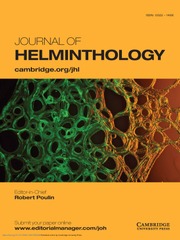No CrossRef data available.
Article contents
Cactodera xinanensis n. sp. (Nematoda: Heteroderinae), a new species of cyst-forming nematode from Southwest China, with a key to the Genus Cactodera
Published online by Cambridge University Press: 11 November 2024
Abstract
The cyst nematodes, subfamily Heteroderinae, are plant pathogens of worldwide economic significance. A new cyst nematode of the genus Cactodera within the Heteroderinae, Cactodera xinanensis n. sp., was isolated from rhizospheres of crops in the Guizhou and Sichuan provinces of southwest China. The new species was characterized by having the cyst with a length/width = 1.3 ± 0.1 (1.1–1.6), a fenestral diameter of 28.1 ± 4.3 (21.3–38.7) μm, vulval denticles present; second-stage juvenile with stylet 21.5 ± 0.5 (20.3–22.6) μm long, tail 59.4 ± 2.0 (55.9–63.8) μm long and hyaline region 28.7 ± 2.7 (25.0–36.3) μm long, lateral field with four incisures; the eggshell with punctations. The new species can be differentiated from other species of Cactodera by a longer tail and hyaline region of second-stage juveniles. Phylogenetic relationships within populations and species of Cactodera are given based on the analysis of the internal transcribed spacer (ITS-rRNA), the large subunit of the nuclear ribosomal RNA (28S-rRNA) D2-D3 region and the partial cytochrome oxidase subunit I (COI) gene sequences here. The ITS-rRNA, 28S-rRNA and COI gene sequences clearly differentiated Cactodera xinanensis n. sp. from other species of Cactodera. A key and a morphological identification characteristic table for the species of Cactodera are included in the study.
- Type
- Research Paper
- Information
- Copyright
- © The Author(s), 2024. Published by Cambridge University Press


